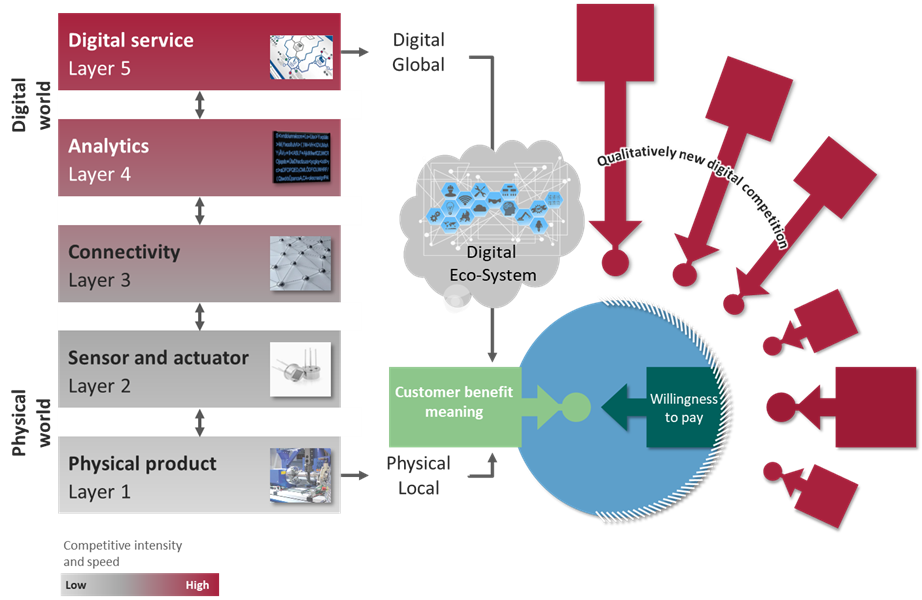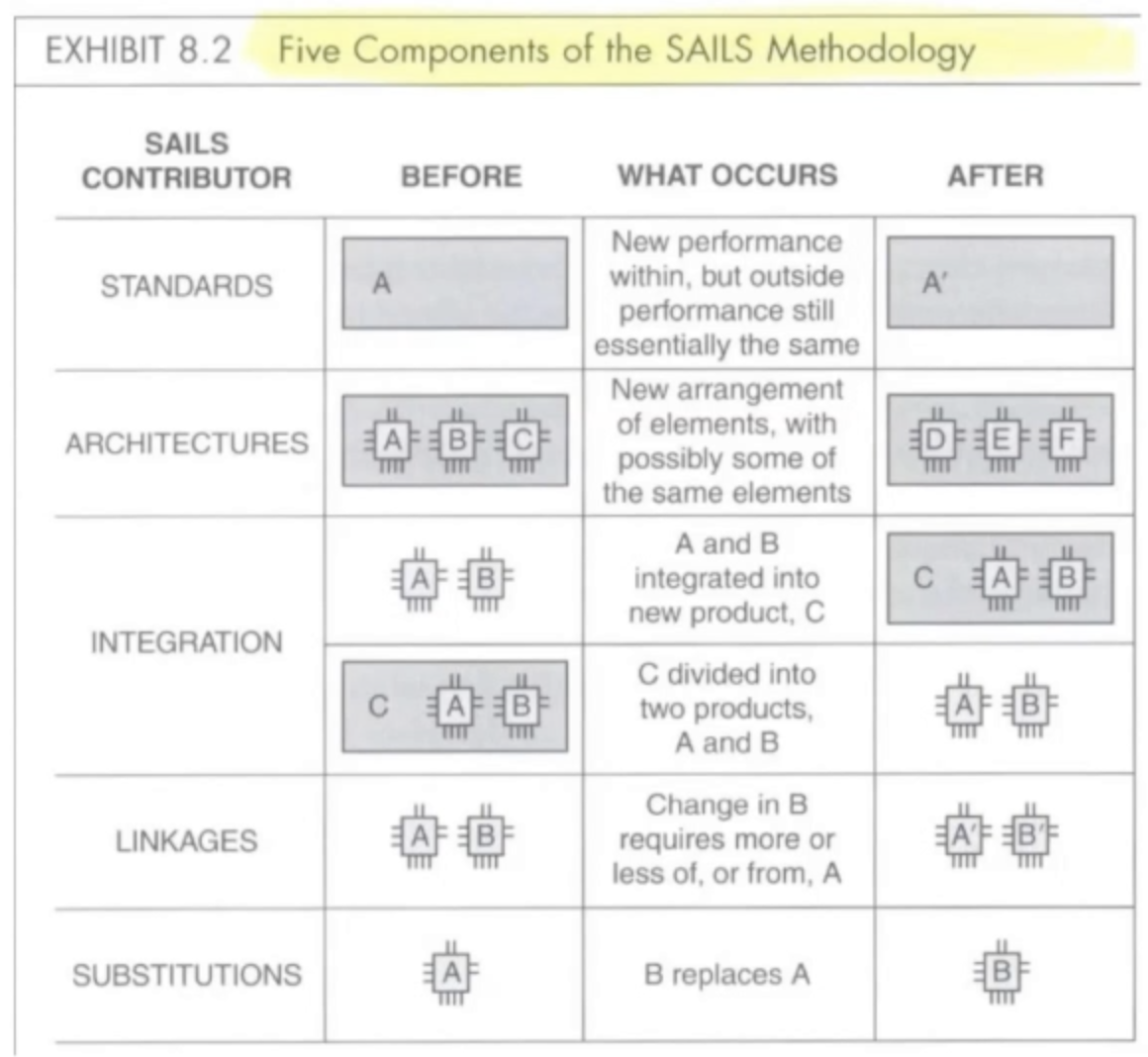Case Study: Signify and the SAILS Methodology Approach. 3rd module of the MIPLM 2021/22
The SAILS approach was originally developed as a road-mapping tool for analyzing disruptive threats to a company’s business model. SAILS is an acronym and stands for the initials of the individual methodological building blocks: (S) Standards, (A) Architectures, (I) Integration, (L) Linkages, (S) Substitutions. The SAILS approach is based on the underlying idea of empirical observation of technological developments and change mechanisms. These can be traced back to the five general, abstract and generic principles mentioned above. The special charm of this approach is that it can basically be applied to any technology and industry.
Standards
Interoperability is a key success factor for IoT business models. The exchange of data or energy, for example, takes place via standards. Objects which are capable of using the same standard are classified as compatible. Famous examples include communication systems such as 5G or LTE.
Architecture
The SAILS logic uses the term “architecture” in its general sense, i.e. the planned design and development of systems. It therefore speaks of a “value creation architecture” when referring to more complex value creation structures than Porter’s value chain. Changes in architecture must be analyzed at different system levels: subsystems, systems or super systems.
Integration
This term subsumes all forms of combining elements and functions in order to design new systems of enhanced functionality, as well as disintegration, i.e. the deliberate separation of elements from elements previously combined within a system, and the reintegration of separated parts. Thinking in terms of integration is typically applied to IoT business models to overcome various barriers of the existing value creation architecture. Thinking in terms of integration can be directed against suppliers (backward integration), against customers (forward integration) or against former unrelated industries and competitors (lateral integration).
Linking
The full capacity for the creation of customer benefits is usually not achieved before the different levels of the IoT layer model are skillfully linked. Links can exist on all system levels or between individual levels. These links can be communication paths but also integrations for value creation.

Substitution
Substitution is one of the core aspects of Porter’s classic strategic approaches as well as an integral component of market-oriented IP-based prohibition strategies. The methods of substitution are diverse and can be applied to IoT-based business models at various levels, as well across levels. Functions, components, products, hardware for software, and indeed entire types of devices can be substituted, as well as value creation and work steps from manual data collection to machine operation, and entire business models. Substitution can be step by step or radical, for example stepwise from product sale to operator models. Materials, stocks and motion sequences, for instance, can be replaced by real-time production. Also think of the functional integration by today’s smartphones and the substitution of entire device classes that comes along with it. (Source: SME Patent Strategies For IoT-Based Business Models (ipbusinessacademy.org)
The SAILS Methodology provides a broader understanding of what an innovation is about. SAILS is a useful framework to address questions on the business model and customer journey, and facilitates the understanding of what is critical to be made exclusive by the IP strategy.
Cannot open the video? Please click: https://youtu.be/Adgl1_odutY
Example Signify:
Signify is the leading provider on lighting solutions worldwide and separated in 2016 from the mother corporation Philips. They offer many solutions to industry customers or private households. An example of the application of Signify’s technologies can be found in Paços de Ferreira, a municipality in Portugal, that wanted to improve its public lighting for citizens, lower the city government’s lighting costs, and meet the municipality’s sustainability goals by reducing its yearly carbon footprint.
Cannot open the video? Please click: https://youtu.be/Q06bg58fGgQ
The Students worked on the following exercise:
Analyze the following patents and connect each of them with one of the 5 categories of the SAILS approach. SAILS is an acronym and stands for the initials of the methodological building blocks: (S) Standards, (A) Architectures, (I) Integration, (L) Linkages, (S) Substitutions.
- Group 1: US10262527B2 “Commissioning of remotely managed intelligent lighting
devices” - Group 2: EP3033927B1 „Lighting control via a mobile computing device”
- Group 3: EP1422975B1 „Light-emitting diode based product„
- Group 4: WO2018141664A1 „A lighting enabled system and methods for building
evacuation planning” - Group 5: EP2417833B1 „Lighting device having status indication by modulated light”
Five Components of the SAILS Methodology

Cannot open the video? Please click: https://youtu.be/uJnMtLBQ8U8



